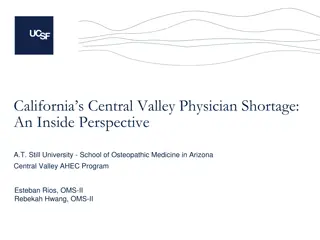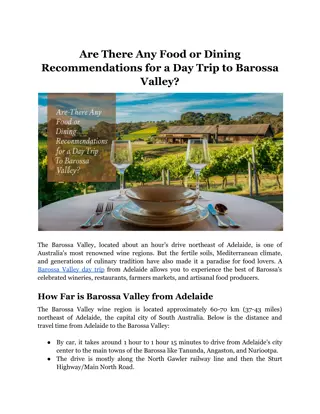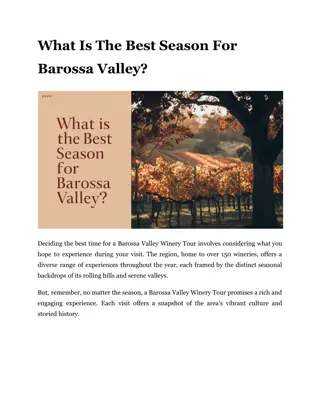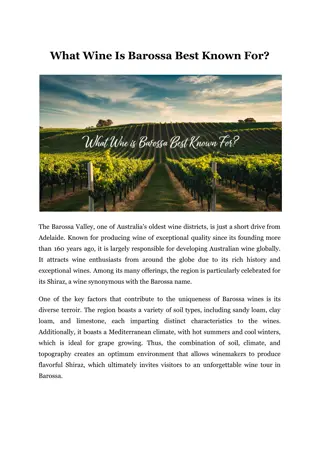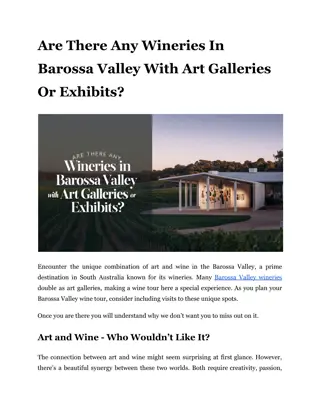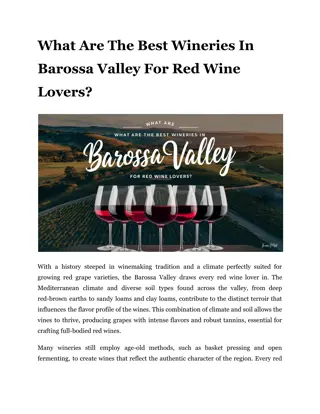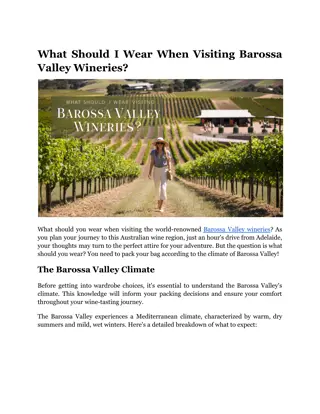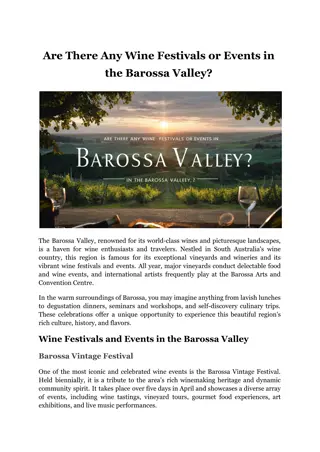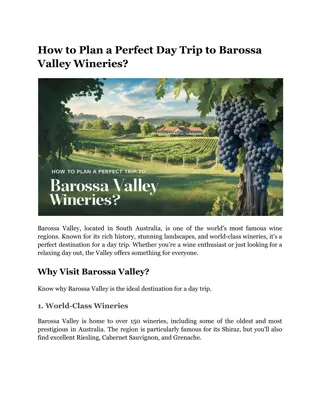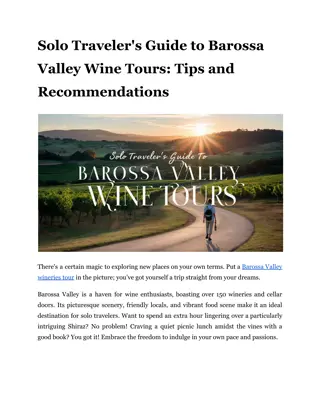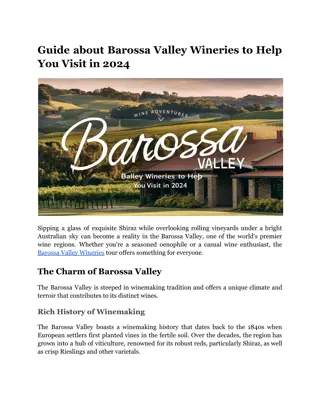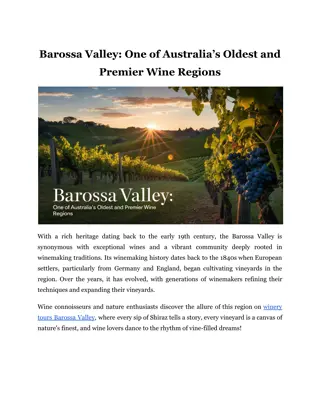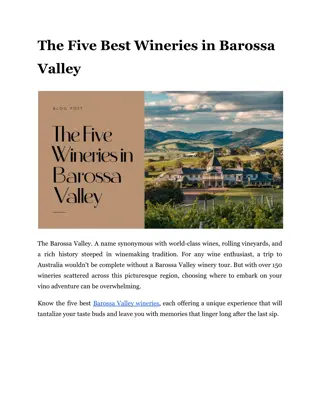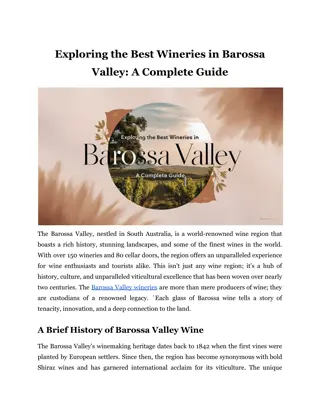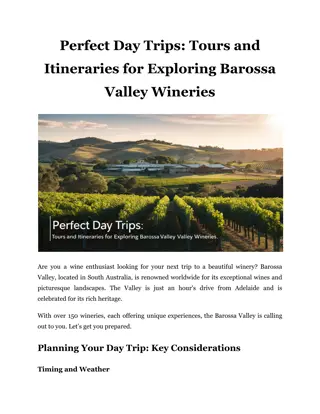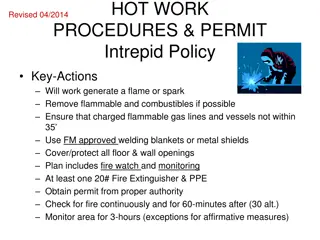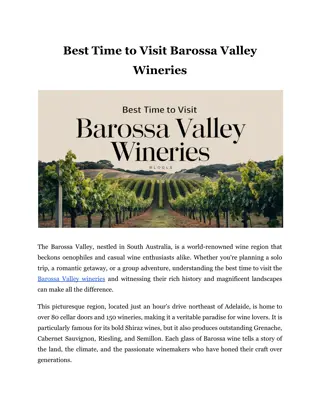
How hot does it get in the Barossa Valley?
Explore the Barossa Valley's summer temperatures. Learn how hot it gets and what to expect during your visit!n
Download Presentation

Please find below an Image/Link to download the presentation.
The content on the website is provided AS IS for your information and personal use only. It may not be sold, licensed, or shared on other websites without obtaining consent from the author. If you encounter any issues during the download, it is possible that the publisher has removed the file from their server.
You are allowed to download the files provided on this website for personal or commercial use, subject to the condition that they are used lawfully. All files are the property of their respective owners.
The content on the website is provided AS IS for your information and personal use only. It may not be sold, licensed, or shared on other websites without obtaining consent from the author.
E N D
Presentation Transcript
How Hot Does It Get In The Barossa Valley? The Barossa Valley, nestled in South Australia, is renowned worldwide for its exceptional wines and picturesque landscapes. But have you ever wondered about the climate that nurtures these world-class vineyards? It's not just the rich history and the quality of wines that attract visitors, but also the climate that shapes the character of its wines. Understanding the temperature patterns in the Barossa Valley becomes important for wine enthusiasts and tourists alike, as it influences not only the wine production but also the best times to visit for a Barossa Valley winery tour. The Barossa Valley Climate: A Mediterranean Marvel
The Barossa Valley boasts a Mediterranean climate, characterized by hot, dry summers and mild, wet winters. This climate is ideal for grape cultivation, as the warm, sunny days allow grapes to ripen to perfection. Summer (December to February) This is peak season in the Barossa Valley, and it's no wonder why. Expect warm to hot days with average temperatures ranging from 26 C to 29 C. However, don't be surprised by occasional heatwaves pushing temperatures into the high 30s or 40s Celsius. The good news is that nights are pleasantly mild, making outdoor dining and stargazing a delightful experience. Autumn (March to May) As summer fades, the Barossa Valley transitions into a milder climate. Days are still warm, perfect for exploring the region's wineries and indulging in delicious local cuisine. Nights start to cool down, making it a pleasant time for outdoor activities. Winter (June to August) Average daytime temperatures range from 14 C to 15 C, with occasional chilly spells. However, the region receives most of its rainfall during this period, essential for replenishing the vineyards. Spring (September to November) Spring brings renewed life to the Barossa Valley. Temperatures gradually increase, and the landscape transforms into a vibrant display of green. It's a lovely time to witness the vineyards come to life and enjoy the blossoming beauty of the region. Read More Articles: Exclusive Experiences: VIP and Private Winery Tours in Barossa Valley
Temperature Extremes: How Hot and Cold Does It Get? Hottest Temperatures: The Barossa Valley has recorded temperatures exceeding 40 C (104 F) during summer heatwaves. Staying hydrated and taking precautions to protect yourself from the heat is crucial. Coldest Temperatures: Winter nights can be quite chilly, with temperatures occasionally dropping below 5 C (41 F). Packing warm clothing is essential if you're visiting during this period. Comparison of Barossa Valley and Other Wine Regions To better understand the climate of the Barossa Valley, it is useful to compare it with other notable wine regions. Average High ( C) Summer Average Low ( C) Winter Region Notable Varietals Barossa Valley 30-40 5-15 Shiraz, Grenache Margaret River 28-35 10-15 Cabernet Sauvignon Napa Valley Chardonnay, Sauvignon Cabernet 30-35 5-10 Merlot, Sauvignon Cabernet Bordeaux 25-30 5-10 The Barossa Valley's temperatures are comparable to those of Napa Valley, but with more extreme summer highs, making it particularly favorable for robust red varietals.
How Temperature Affects Grape Growing The high temperatures in the Barossa Valley during the summer months are really important for the development of grape flavors. The warm, dry conditions minimize the risk of fungal diseases, allowing grapes to mature healthily. Key Effects of Temperature on Grapes Sugar Accumulation: The consistent heat during summer promotes sugar accumulation in grapes, leading to higher alcohol levels in the wine. This is particularly beneficial for varietals like Shiraz, which thrive in warmer conditions. Flavor Concentration: The stress of dry conditions encourages the vines to concentrate their flavors, resulting in more intense and structured wines. This is evident in the rich, bold profiles typical of Barossa Valley wines. Harvest Timing: The predictability of the weather allows winemakers to plan harvests accurately, ensuring grapes are picked at their peak ripeness. Typically, the harvest season runs from mid-February to late April. Activities During Hot Weather Visiting the Barossa Valley during the hot summer months can be a delightful experience, especially with the region's array of wineries and outdoor activities. Barossa Valley Wineries To Visit Some of the most renowned Barossa Valley Wineries are: Penfolds: Famous for its Grange, Penfolds offers tastings and tours showcasing its rich history and premium wines. Jacob's Creek: This iconic winery provides a variety of tasting experiences and has beautiful grounds perfect for picnics. Seppeltsfield: Known for its fortified wines, Seppeltsfield offers a unique tasting experience with a historical backdrop.
Barossa Valley Wineries Tour Would Be Even Better Winery Tours Barossa is an excellent way to explore the region. Many tour operators offer guided experiences that include: Tastings at Multiple Wineries: Sample a range of wines, from Shiraz to Grenache, and learn about the winemaking process. Lunch Options: Enjoy gourmet meals paired with local wines, often featuring fresh produce from the region. Scenic Views: Tours often include visits to vineyards with stunning views of the rolling hills and valleys. Read More Articles: Luxury Destinations Accessible via Private Jet from San Antonio Tips for Visiting in Hot Weather When planning a visit to the Barossa Valley during the hotter months, consider the following tips to enhance your experience: Stay Hydrated: Drink plenty of water throughout the day, especially if you are participating in tastings. Plan for Shade: Many wineries have outdoor areas, so look for shaded spots to relax between tastings. Dress Appropriately: Wear light, breathable clothing and comfortable shoes suitable for walking around vineyards. Book Ahead: Summer is a popular time for visitors, so make reservations for tours and tastings in advance. Embracing the Heat of the Barossa Valley The Barossa Valley's warm climate is not just a challenge to be managed; it's an integral part of what makes this wine region special.
Don't let the summer heat deter you it's all part of the Barossa's charm. Contact TrailHopper to book your Barossa Valley wineries tour and discover firsthand how the region's climate translates into world-class wines. Come and feel the warmth of the Barossa in its climate, its wines, and its hospitality! Site Article: How Hot Does It Get In The Barossa Valley?

